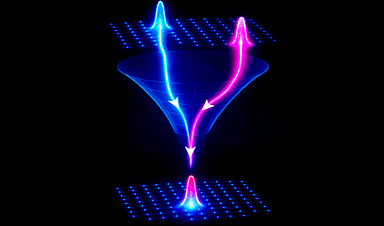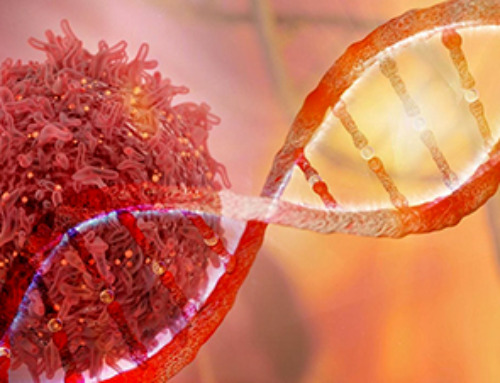- Virtual patients, vaccines, medicine-making biomachines and microneedles are examples of tech innovation that is meeting the moment to address the global health crisis.
- Health has been a strong focus for this year’s top 10 emerging technologies.
- Technology can drive a Great Health Reset, but success will be determined by the willingness of all stakeholders to trust one another and to invest in a shared effort.
This year’s Top 10 Emerging Technologies, revealed in a new report produced in partnership with Scientific American, are meeting the moment to fuel a “Great Reset”: a complete redesign of how we manage the current crisis and prevent or mitigate the next one.
Tech innovation is the agent of change. The current cohort, with those of earlier editions, offer solutions to the world’s most pressing challenges – notably the global health crisis and its economic fallout, alongside the ongoing climate emergency.
COVID-19 has exposed the global cooperation gap
The pandemic persists despite the extraordinary efforts of a global medical community to contain and expunge the underlying virus. Perhaps more concerning, the absence of a coordinated global approach to containment and resolution has likely expanded and extended its impact.
Two divergent yet critically entwined issues arise: the technological resources brought to bear in addressing this pandemic, and the global international governance and coordination required to achieve best outcomes.
One of this year’s Top 10, virtual patients – which replace humans with simulations – could make clinical trials faster and safer. Microneedles that provide painless injections, another technology on the list, could speed drug delivery for the prevention and treatment of viruses like COVID-19. A third tech, whole-genome synthesis, enables researchers to design genetic sequences that could be introduced into microbes to turn them into medicine-making biomachines.
Deep technical capabilities such as these executed in isolation are likely to be ineffective, as would be well-coordinated international efforts that are absent the required technologies. In achieving the Great Health Reset, both global governance and emergent technologies will play central roles together.
Reasons for optimism – virus hunting and pandemic bashing
To avoid future pandemics, access to what is traditionally seen as protected health data is critical. Such transparency is not supported by many nations today, and the current pandemic is in part a consequence of the time lag from disease discovery to reporting. It is a systemic, global problem.
The world needs to move towards a system where local healthcare providers, and their local government leadership, recognize and report data “up the chain of command.” Sequential reporting delays, or data suppression, costs lives as the disease vector spreads unchecked. Ideally, the autonomous collection and interpretation of medical reports in real time and on a global scale would drastically improve disease discovery.
News
AI Is Overheating. This New Technology Could Be the Fix
Engineers have developed a passive evaporative cooling membrane that dramatically improves heat removal for electronics and data centers Engineers at the University of California San Diego have created an innovative cooling system designed to greatly enhance [...]
New nanomedicine wipes out leukemia in animal study
In a promising advance for cancer treatment, Northwestern University scientists have re-engineered the molecular structure of a common chemotherapy drug, making it dramatically more soluble and effective and less toxic. In the new study, [...]
Mystery Solved: Scientists Find Cause for Unexplained, Deadly Diseases
A study reveals that a protein called RPA is essential for maintaining chromosome stability by stimulating telomerase. New findings from the University of Wisconsin-Madison suggest that problems with a key protein that helps preserve chromosome stability [...]
Nanotech Blocks Infection and Speed Up Chronic Wound Recovery
A new nanotech-based formulation using quercetin and omega-3 fatty acids shows promise in halting bacterial biofilms and boosting skin cell repair. Scientists have developed a nanotechnology-based treatment to fight bacterial biofilms in wound infections. The [...]
Researchers propose five key questions for effective adoption of AI in clinical practice
While Artificial Intelligence (AI) can be a powerful tool that physicians can use to help diagnose their patients and has great potential to improve accuracy, efficiency and patient safety, it has its drawbacks. It [...]
Advancements and clinical translation of intelligent nanodrugs for breast cancer treatment
A comprehensive review in "Biofunct. Mater." meticulously details the most recent advancements and clinical translation of intelligent nanodrugs for breast cancer treatment. This paper presents an exhaustive overview of subtype-specific nanostrategies, the clinical benefits [...]
It’s Not “All in Your Head”: Scientists Develop Revolutionary Blood Test for Chronic Fatigue Syndrome
A 96% accurate blood test for ME/CFS could transform diagnosis and pave the way for future long COVID detection. Researchers from the University of East Anglia and Oxford Biodynamics have created a highly accurate [...]
How Far Can the Body Go? Scientists Find the Ultimate Limit of Human Endurance
Even the most elite endurance athletes can’t outrun biology. A new study finds that humans hit a metabolic ceiling at about 2.5 times their resting energy burn. When ultra-runners take on races that last [...]
World’s Rivers “Overdosing” on Human Antibiotics, Study Finds
Researchers estimate that approximately 8,500 tons of antibiotics enter river systems each year after passing through the human body and wastewater treatment processes. Rivers spanning millions of kilometers across the globe are contaminated with [...]
Yale Scientists Solve a Century-Old Brain Wave Mystery
Yale scientists traced gamma brain waves to thalamus-cortex interactions. The discovery could reveal how brain rhythms shape perception and disease. For more than a century, scientists have observed rhythmic waves of synchronized neuronal activity [...]
Can introducing peanuts early prevent allergies? Real-world data confirms it helps
New evidence from a large U.S. primary care network shows that early peanut introduction, endorsed in 2015 and 2017 guidelines, was followed by a marked decline in clinician-diagnosed peanut and overall food allergies among [...]
Nanoparticle blueprints reveal path to smarter medicines
Lipid nanoparticles (LNPs) are the delivery vehicles of modern medicine, carrying cancer drugs, gene therapies and vaccines into cells. Until recently, many scientists assumed that all LNPs followed more or less the same blueprint, [...]
How nanomedicine and AI are teaming up to tackle neurodegenerative diseases
When I first realized the scale of the challenge posed by neurodegenerative diseases, such as Alzheimer's, Parkinson's disease and amyotrophic lateral sclerosis (ALS), I felt simultaneously humbled and motivated. These disorders are not caused [...]
Self-Organizing Light Could Transform Computing and Communications
USC engineers have demonstrated a new kind of optical device that lets light organize its own route using the principles of thermodynamics. Instead of relying on switches or digital control, the light finds its own [...]
Groundbreaking New Way of Measuring Blood Pressure Could Save Thousands of Lives
A new method that improves the accuracy of interpreting blood pressure measurements taken at the ankle could be vital for individuals who are unable to have their blood pressure measured on the arm. A newly developed [...]
Scientist tackles key roadblock for AI in drug discovery
The drug development pipeline is a costly and lengthy process. Identifying high-quality "hit" compounds—those with high potency, selectivity, and favorable metabolic properties—at the earliest stages is important for reducing cost and accelerating the path [...]





















